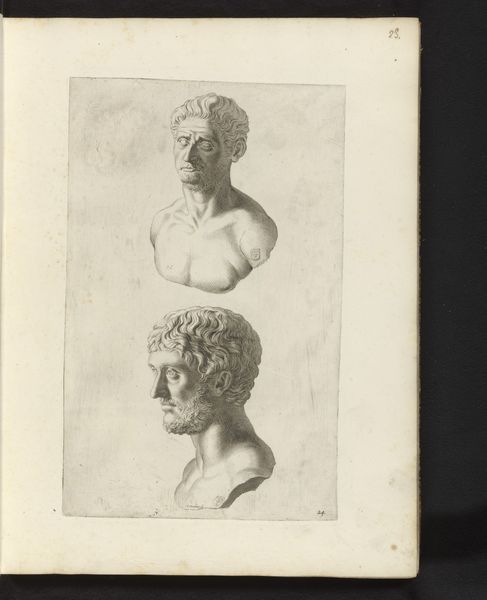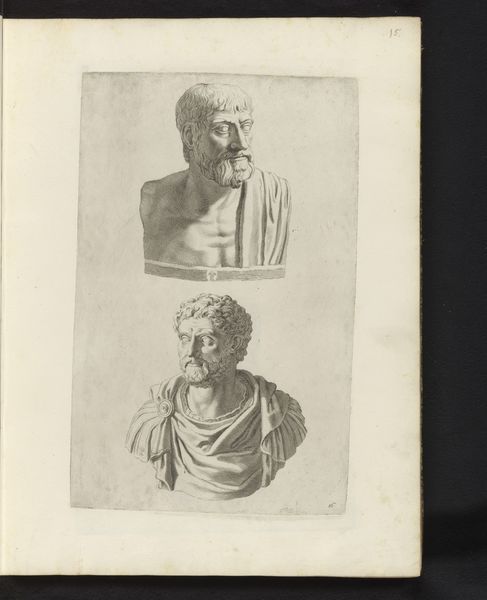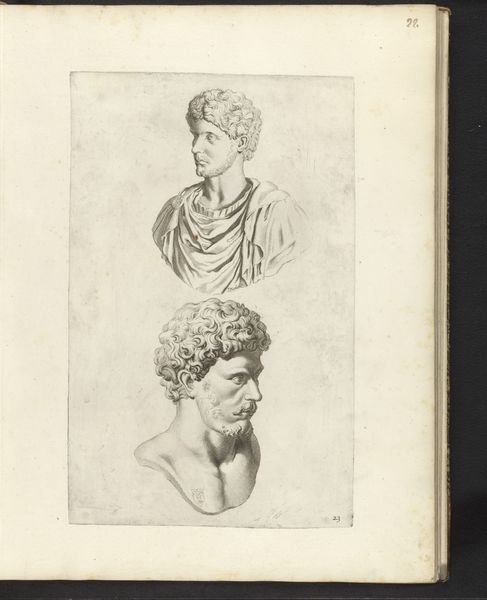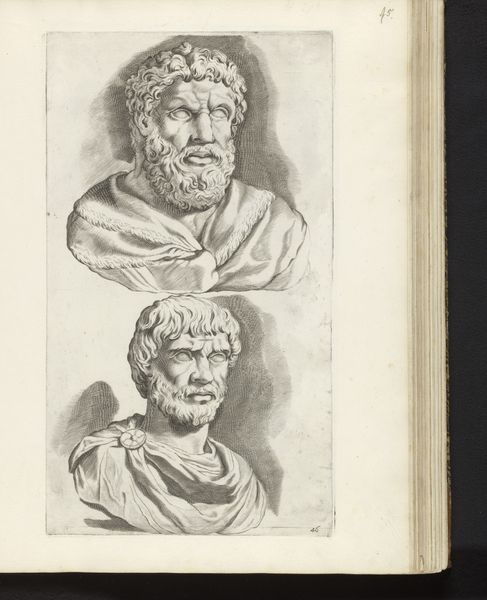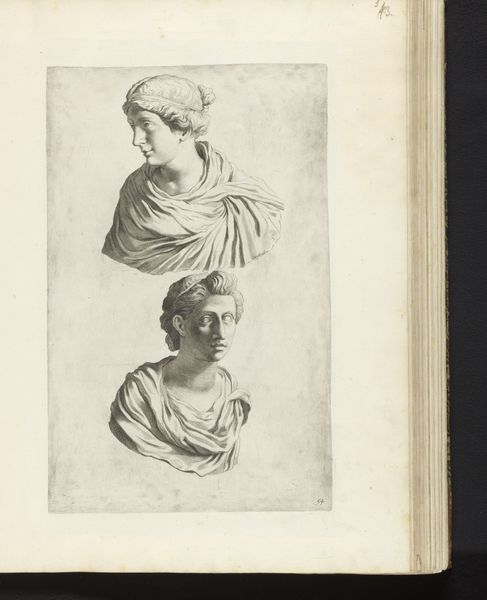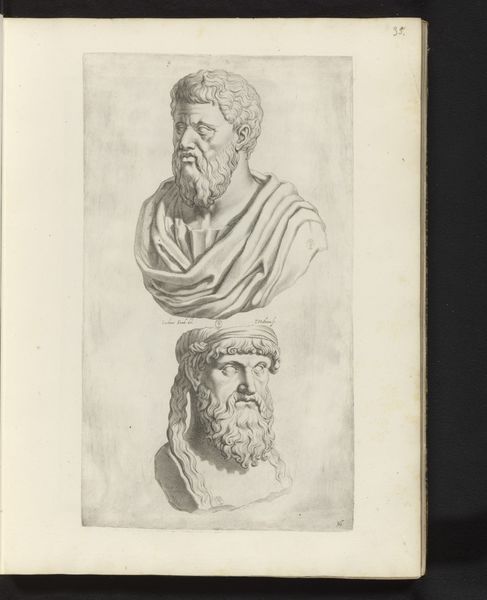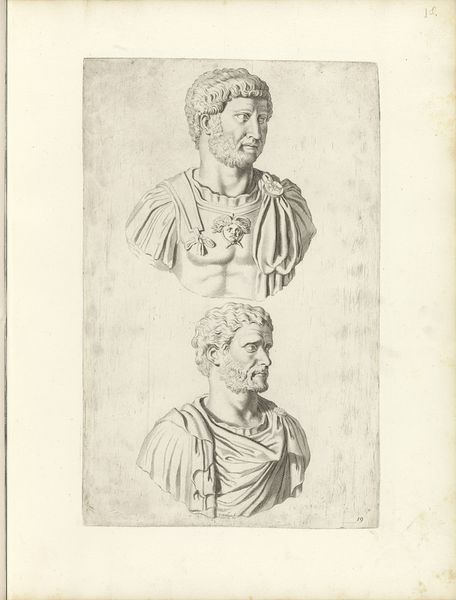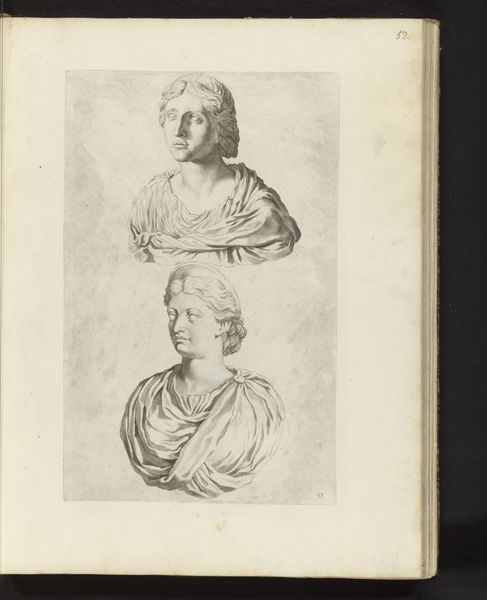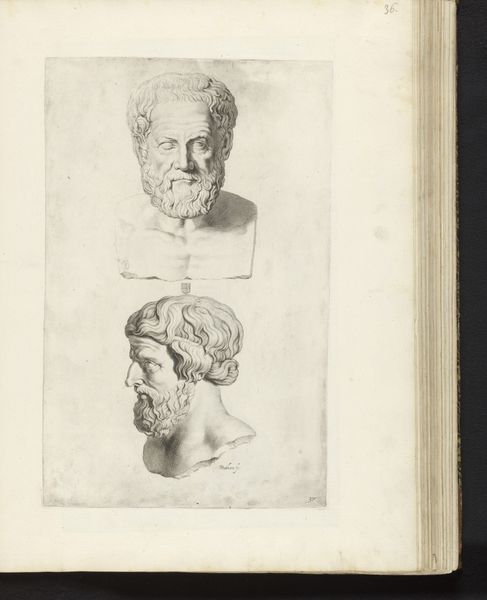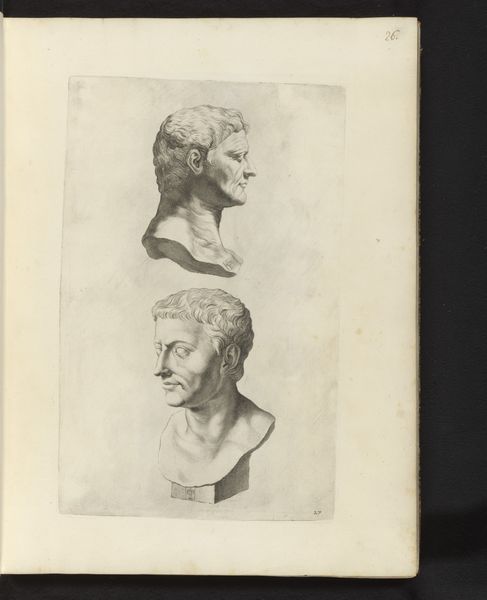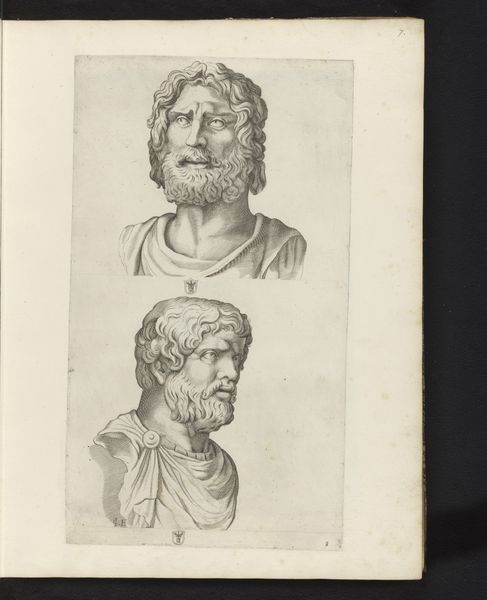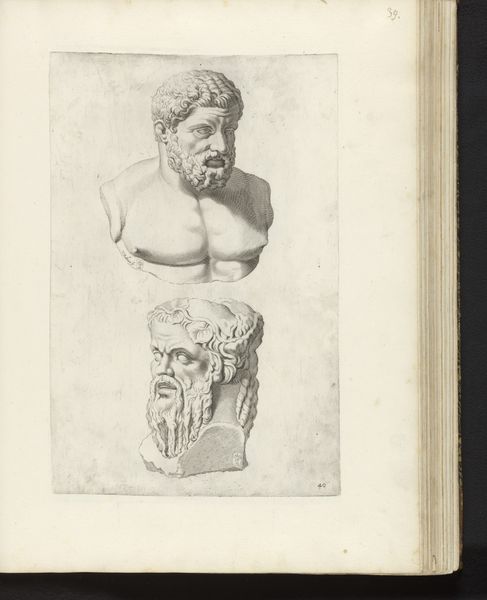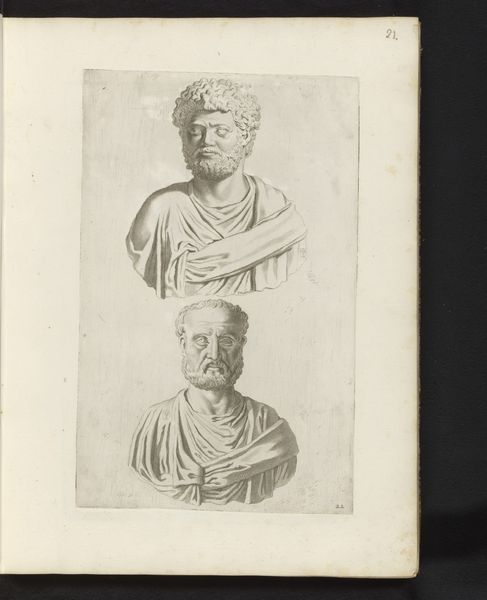
drawing, graphite
#
portrait
#
pencil drawn
#
drawing
#
classical-realism
#
ancient-mediterranean
#
graphite
#
history-painting
#
academic-art
Dimensions: height 375 mm, width 236 mm
Copyright: Rijks Museum: Open Domain
Editor: Here we have "Bustes van Pupienus en Balbinus," a graphite drawing by Theodor Matham, dating back to the mid-17th century. They're stark, almost ghostly. What social and political echoes do you hear when you look at this work? Curator: It's interesting you say 'ghostly,' because that's precisely what history often does—haunts us with the complexities of power and representation. Look at the figures Matham chose: Pupienus and Balbinus, two emperors who reigned for only three months before being assassinated. This drawing, created long after their deaths, asks us to consider the long shadow of Roman imperial power and how it continues to be interpreted and re-presented across centuries. What does it mean to resurrect these men during a time of empire-building in Europe? Editor: So, this isn't just an artistic study of antiquity, but also a commentary on Matham's present. Curator: Precisely. The choice of subject and the medium itself—drawing, a relatively accessible form—could be interpreted as a way to democratize these figures, to bring the imperial image closer to the public. How do you think Matham’s representation of their authority compares to actual Roman sculptures of emperors? Editor: That's an interesting angle! Matham's approach, in comparison to say, Roman portraiture feels… stripped back. The faces appear quite individualized but they lack the overwhelming sense of authority you might see in an actual imperial sculpture. Curator: Exactly! The ‘warts and all’ approach challenges the idealized imagery often associated with power, suggesting a more critical, humanized, even vulnerable reading of these emperors. It subtly disrupts any simplistic glorification of imperial power by revealing the individuals within the office. It forces us to reckon with who we choose to memorialize and what values those choices reinforce. Editor: It's like Matham is pulling back the curtain, inviting us to consider the human cost, or rather the human figures, behind grand historical narratives. I see it as less about the emperors themselves, but a cautionary message concerning power, one that speaks to our time too. Curator: Absolutely, art provides an interesting viewpoint on the legacies and modern impact of historical events. Thanks for exploring this with me.
Comments
No comments
Be the first to comment and join the conversation on the ultimate creative platform.
